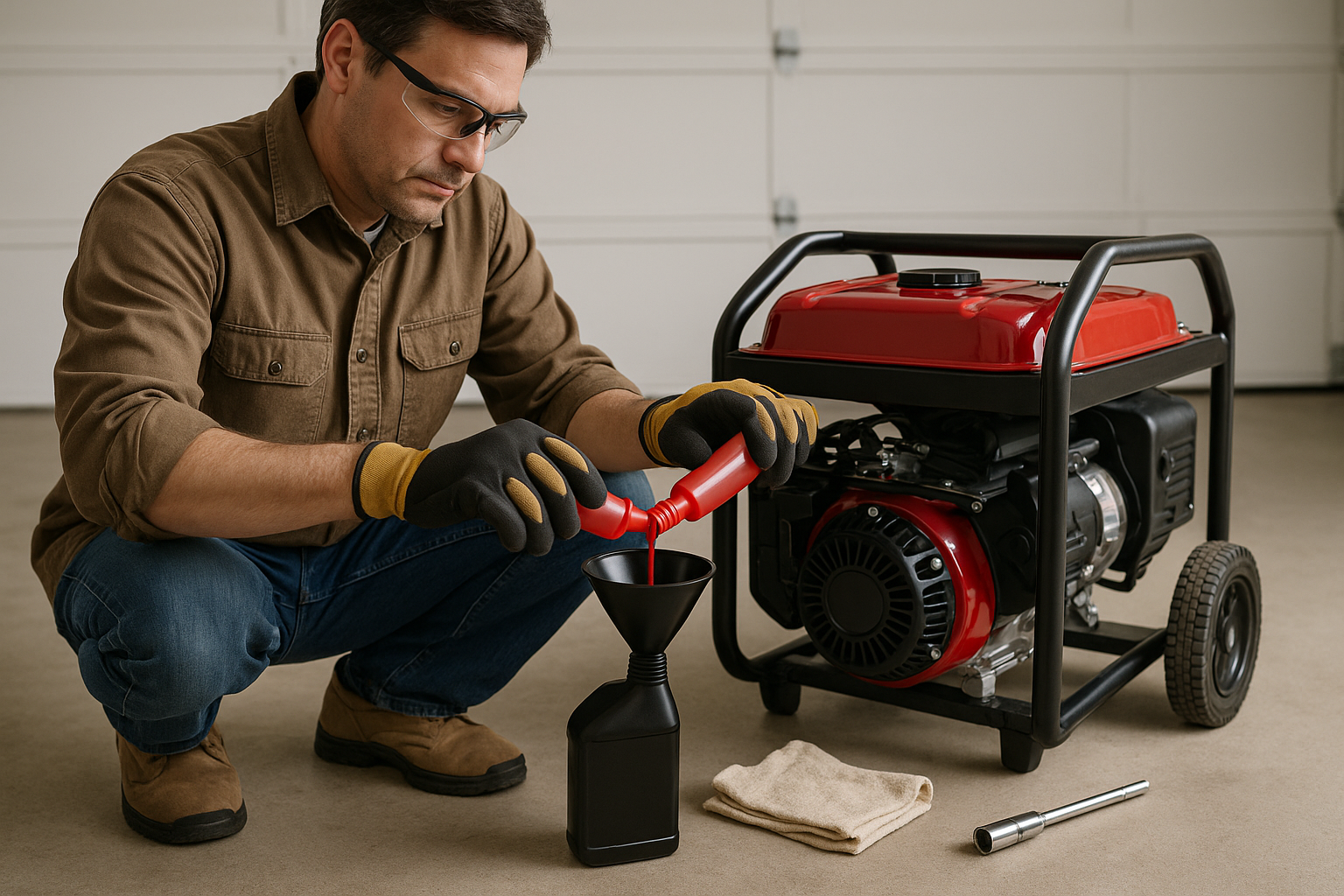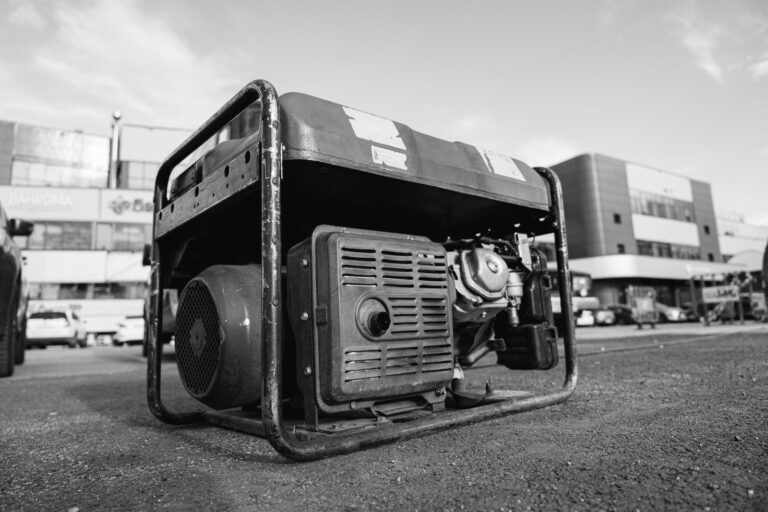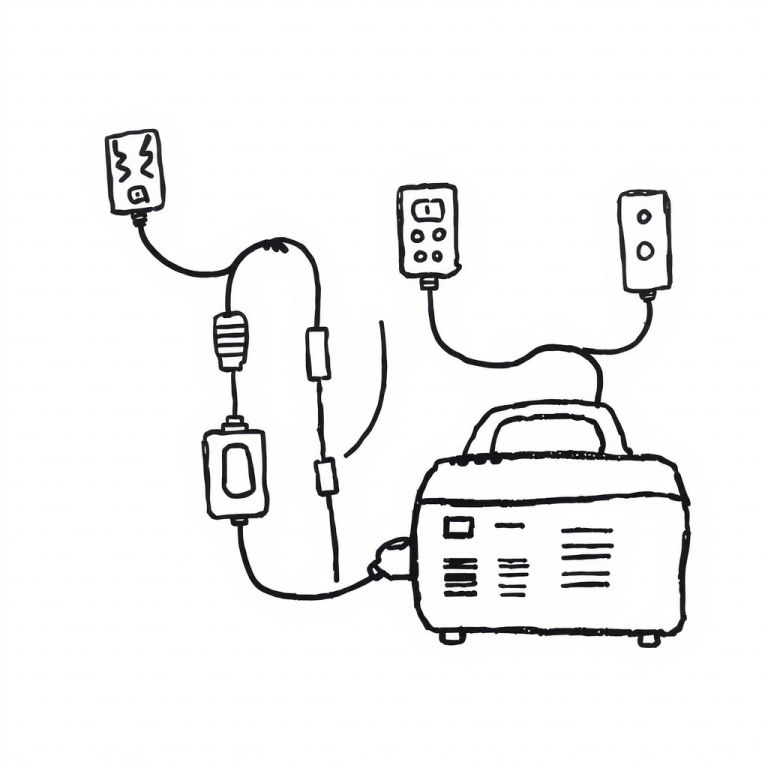How to Safely Store a Generator for Winter (or Long Periods): A Step-by-Step Guide
Generators are invaluable during power outages, camping trips, and emergencies. But if you’re not using yours regularly—especially during winter or long off-seasons—it’s essential to store it properly.
Failing to prepare your generator for storage can lead to fuel degradation, battery failure, corrosion, and even engine damage. The good news is that with a little time and effort, you can safely store your generator and ensure it starts reliably when you need it most.
In this guide, we’ll walk you through everything you need to know about how to safely store a generator, whether it’s for winter, summer, or any extended period of inactivity.
Why Proper Storage Matters
When left unused for months, generators can suffer from several preventable issues:
What Happens When Generators Sit Unused?
- Fuel breakdown: Gasoline degrades over time, leaving varnish deposits that clog carburetors.
- Battery drain: Electric-start models may lose charge, leading to sulfation and reduced lifespan.
- Corrosion: Moisture can cause rust on metal components and connectors.
- Degraded seals and hoses: Rubber parts can dry out and crack.
Consequences of Poor Storage
- Hard starting or complete failure to start
- Engine damage from stale fuel
- Electrical system malfunctions
- Costly repairs or replacement
Proper storage ensures your generator remains in excellent working condition and avoids unnecessary wear and tear.
Tools and Supplies Needed for Storage
Before beginning the storage process, gather the following tools and materials:
| Item | Purpose |
|---|---|
| Fresh gasoline or propane | For refilling after storage |
| Fuel stabilizer | Prevents fuel breakdown |
| Clean oil and oil filter | Replaces old, degraded oil |
| Battery charger/maintainer | Keeps battery healthy |
| Air compressor or soft brush | For cleaning dust and debris |
| Dielectric grease | Protects electrical connections |
| Dry storage container or cover | Shields generator from moisture and dirt |
| Desiccant packs or dehumidifier (optional) | Controls humidity |
Optional but helpful:
- Multimeter (to test battery voltage)
- Spark plug tester or new spark plugs
- Oil extraction pump
Step-by-Step Guide to Preparing Your Generator for Storage
Follow these steps carefully to ensure your generator is ready for long-term storage.
Step 1: Turn Off and Cool Down the Generator
- Shut down the generator completely.
- Allow it to cool for at least 30 minutes before handling to avoid burns or fire hazards.
Step 2: Run the Generator Dry or Stabilize the Fuel
You have two options:
Option A: Run Until Empty
- Run the generator until the fuel tank and carburetor are empty.
- This prevents fuel from gumming up internal components.
Option B: Use Fuel Stabilizer
- Add a quality fuel stabilizer to the tank.
- Run the generator for 10–15 minutes to circulate stabilized fuel through the system.
- This option is better if you want to keep fuel in the tank without draining it.
Tip: Always use ethanol-free gasoline or high-quality fuel if possible, as ethanol-blended fuels break down faster.
Step 3: Change the Oil and Oil Filter
Old oil contains contaminants that can harm the engine during storage.
- Warm up the generator slightly (not hot) to help drain oil more easily.
- Locate the oil drain plug and drain into a safe container.
- Replace the oil filter if your model has one.
- Refill with fresh oil suitable for your generator (check owner’s manual).
Step 4: Clean the Generator Thoroughly
Dust, dirt, and debris can trap moisture and cause corrosion.
- Wipe the exterior with a clean, dry cloth.
- Use compressed air or a soft brush to clean cooling vents and intake areas.
- Avoid using water—moisture can promote rust.
Step 5: Inspect and Maintain the Battery (for Electric Start Models)
If your generator uses a battery for electric start:
- Disconnect the battery cables (negative first, then positive).
- Clean terminals with a baking soda solution and dry thoroughly.
- Fully charge the battery using a charger or maintainer.
- Store the battery separately in a cool, dry place.
- Consider using a battery tender to maintain charge during storage.
Step 6: Check and Maintain the Spark Plug
A dirty or worn spark plug can cause starting problems later.
- Remove the spark plug using a socket wrench.
- Inspect for carbon buildup or wear.
- Clean or replace the spark plug as needed.
- Apply a small amount of dielectric grease to the connector to prevent corrosion.
Step 7: Fog the Cylinder (Optional for Long-Term Storage)
To protect internal engine components:
- Spray fogging oil into the spark plug hole.
- Crank the engine briefly (without starting) to coat cylinder walls.
- Helps prevent rust and keeps internal parts lubricated.
Step 8: Cover or Enclose the Generator
Store your generator indoors in a dry, well-ventilated area like a garage or shed.
- Use a breathable, waterproof generator cover.
- Avoid plastic tarps—they can trap moisture.
- Place the generator on a wooden board or rubber mat—not directly on concrete, which can cause condensation.
Special Considerations by Generator Type
Different types of generators require slightly different care.
Portable Generators (Gasoline)
- Most common type
- Require full fuel and oil maintenance
- Easy to move and store
Standby Generators (Natural Gas/Propane)
- Permanently installed
- Typically serviced professionally
- Check coolant levels, battery, and control systems
- May require winterization by a technician
Inverter Generators
- More sensitive electronics
- Follow same steps as portable units
- Store upright to avoid leaks
Propane vs. Gasoline Generators
- Propane models: Can be turned off without draining fuel lines
- Gasoline models: Must be stabilized or drained
Maintaining Your Generator During Storage
Even while stored, your generator needs occasional attention.
Monthly Checks
- Run the generator for 10–15 minutes every 30–60 days
- Recharge battery if not on a maintainer
- Inspect for signs of pests, moisture, or corrosion
Humidity Control
- Place silica gel packets inside the cover or storage area
- Consider a small dehumidifier if storing in a damp basement or garage
Pest Prevention
- Seal openings to prevent rodent nesting
- Place cedar blocks or mothballs nearby (away from fuel sources)
How to Bring Your Generator Out of Storage
When it’s time to use your generator again, follow these steps:
Step 1: Inspect for Damage or Moisture
- Look for signs of rust, mold, or pest activity
- Ensure all fluids are clean and at proper levels
Step 2: Reconnect and Test the Battery
- Reinstall the battery
- Use a multimeter to check voltage (should read ~12V)
- Charge if necessary
Step 3: Refill with Fresh Fuel
- If drained earlier, refill with fresh gasoline
- If stabilized, no need to replace unless stored over 12 months
Step 4: Start and Run Under Light Load
- Let the generator run for 15–30 minutes
- Monitor for unusual noise, smoke, or performance issues
- Connect a small load (like a lamp or fan) to ensure proper output
Conclusion
Storing your generator properly is a small investment of time that pays off in reliability and longevity. By taking the time to clean, stabilize, and protect your generator, you’ll ensure it’s ready to go when you need it most—whether it’s for a winter storm, summer blackout, or an unexpected emergency.
Remember:
- Drain or stabilize fuel
- Change the oil and inspect the battery
- Keep it dry and protected
- Check periodically during storage
Frequently Asked Questions (FAQs)
Q: Should I leave fuel in my generator during storage?
A: Yes—if you add a fuel stabilizer. Otherwise, it’s best to run the generator dry to avoid fuel degradation.
Q: Can I store a generator outside in winter?
A: Not recommended. Exposure to rain, snow, and cold can cause moisture buildup and damage. Always store indoors.
Q: How often should I run a stored generator?
A: Every 30–60 days for 10–15 minutes to keep moving parts lubricated and fuel fresh.
Q: Is it safe to store a generator with the battery connected?
A: No. Batteries can discharge and sulfate over time. It’s best to disconnect and store them separately.
Q: Do I need to change the oil before storage?
A: Yes. Old oil contains contaminants that can damage the engine during storage.




